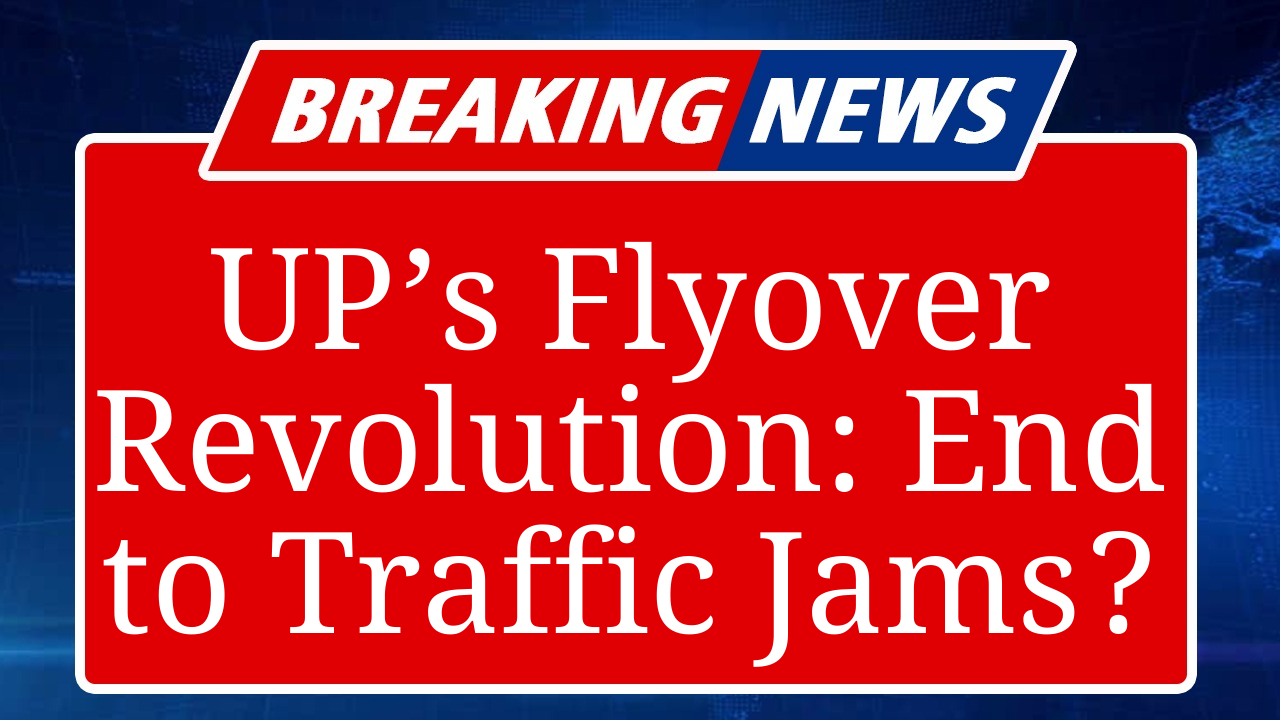“Uttar Pradesh is tackling urban congestion with a robust plan to construct new flyovers across key cities. Aimed at streamlining traffic flow, reducing travel time, and boosting connectivity, the initiative targets choke points in cities like Prayagraj and Lucknow. With real-time data highlighting rising vehicle numbers, the state’s infrastructure push promises relief but faces challenges in execution and sustainability.”
UP’s Bold Move to Unclog City Roads with New Flyovers
Uttar Pradesh, one of India’s most populous states, is grappling with escalating urban traffic congestion, driven by a surge in vehicle ownership. According to data from the Regional Transport Office (RTO) in Prayagraj, over 8.61 lakh new vehicles were registered between 2016 and 2024, averaging 95,713 vehicles annually. With a vehicle density of 184 per kilometer across 9,545 km of roads in the district, the need for infrastructure upgrades is undeniable. To address this, the Uttar Pradesh government has rolled out an ambitious plan to construct flyovers at critical urban choke points, aiming to enhance mobility and reduce travel times in cities like Prayagraj, Lucknow, and Kanpur.
In Prayagraj, the traffic department has identified seven key congestion points requiring flyovers, including busy intersections in Civil Lines and other high-traffic zones. These choke points, exacerbated during events like the Mahakumbh 2025, cause significant delays, with commuters often stuck for over an hour. The Public Works Department (PWD) is spearheading feasibility studies to ensure these projects address high traffic volumes effectively. For instance, a proposed flyover at a critical junction in Civil Lines aims to reduce commuting time by at least 30%, according to PWD estimates.
Lucknow, the state capital, is also a focal point of this initiative. The city’s rapid urbanization has led to bottlenecks on major roads like the Gomti Nagar stretch and Shaheed Path. The state government has allocated funds for elevated corridors, with projects like the 3.5-km flyover connecting Gomti Nagar to Hazratganj under consideration. This flyover is projected to cut travel time by 20 minutes during peak hours, easing the burden on over 5 lakh daily commuters, as per traffic police data.
The plan extends to other cities like Kanpur, where industrial and commercial hubs contribute to heavy vehicular movement. A proposed flyover near Jajmau is expected to streamline traffic on the Kanpur-Lucknow highway, a vital artery for goods transport. The PWD estimates that this project could reduce fuel wastage by 15% by minimizing idling at intersections.
However, the strategy is not without criticism. Urban transport experts argue that flyovers often provide only temporary relief, shifting congestion to adjacent junctions. A 2018 study by the Institute for Transportation and Development Policy (ITDP) highlighted that flyovers in Indian cities can induce higher vehicle usage, exacerbating pollution and congestion in the long term. In UP, environmental concerns are significant, with activists pointing to potential tree felling and noise pollution during construction. For instance, a proposed flyover in Lucknow’s Kukrail forest area has sparked protests over ecological impacts.
The government is countering these concerns by integrating sustainable design elements. In Prayagraj, the PWD plans to incorporate green spaces under flyovers, inspired by Indore’s 2021 initiative to create sports complexes beneath elevated structures. Additionally, the state is exploring public-private partnership (PPP) models to fund these projects, with an estimated cost of ₹5,000 crore for phase one across multiple cities.
Implementation challenges remain a hurdle. Delays in land acquisition, budget approvals, and coordination between departments like PWD, traffic police, and urban local bodies have stalled similar projects in the past. In 2024, only 60% of allocated road infrastructure funds were utilized in UP, according to state budget reports, raising questions about execution efficiency.
Despite these challenges, the government is pushing forward, with tenders for several flyovers expected to be floated by mid-2026. The focus is on signal-free corridors to ensure seamless traffic flow, particularly in preparation for large-scale events like the Kumbh Mela. Traffic police data suggests that flyovers at key junctions could reduce accident rates by 10-15%, as speeding on elevated roads is easier to regulate than at ground-level intersections.
The UP government’s flyover initiative reflects a broader national trend, with cities like Delhi and Hyderabad also investing heavily in elevated corridors. Delhi’s ₹24,000 crore plan, approved in July 2025, includes flyovers and tunnels to address similar congestion issues. However, experts like Prashanth Kumar Bachu, an urban transport specialist, caution that long-term solutions lie in enhancing public transport and pedestrian infrastructure rather than relying solely on flyovers.
As Uttar Pradesh accelerates its urban infrastructure push, the success of this plan will hinge on balancing immediate traffic relief with sustainable urban planning. The state’s cities, choked by rising vehicle numbers, await a transformation that could redefine their mobility landscape.
Disclaimer: This article is based on real-time data and reports from sources like Hindustan Times, The Hindu, and Times of India, alongside inputs from urban planning experts and government statements. Information is subject to change as new developments emerge.

